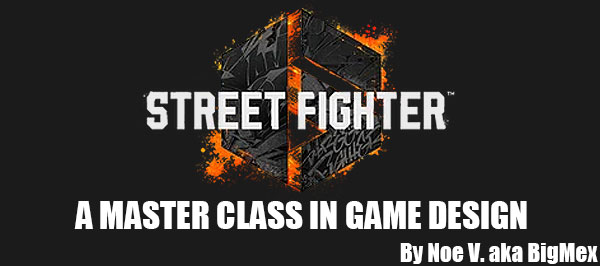
Street Fighter 6 could be a shock to many fighting game players. Over the past decade the genre had been saturated with very dark, and gritty titles. The Mortal Kombat, and Injustice series by Netherrealm Studios were more brutal, and violent than any fighting game had ever been. They were definitely onto something as Mortal Kombat 11 sold 15 million units to Street Fighter V’s 7 million units in around the same time. That signaled to Capcom that something was not working with their franchise. Not that Street Fighter was catering to the same audience, but many players expected the series to become more adult in tone. This was especially true since the Gen-Xers most familiar with the franchise were now middle-aged adults. Perhaps they expected to be following a grizzled, worn down Ryu as he made his way through a new tournament. Instead SF6 went in an entirely different direction. It was fresh, and unique, and reflected through a very flamboyant personality. The first person we saw in the game was a blue-haired online host known as Eternity. Their job was to introduce the Battle Hub, as well as World Tour to audiences. It was fair to say that people made comparisons for Eternity to the over-the-top announcer Ruby Rhod from the movie the 5th Element. It was obvious that this was not going to be like any other game in the series, let alone what any other studio was working on.
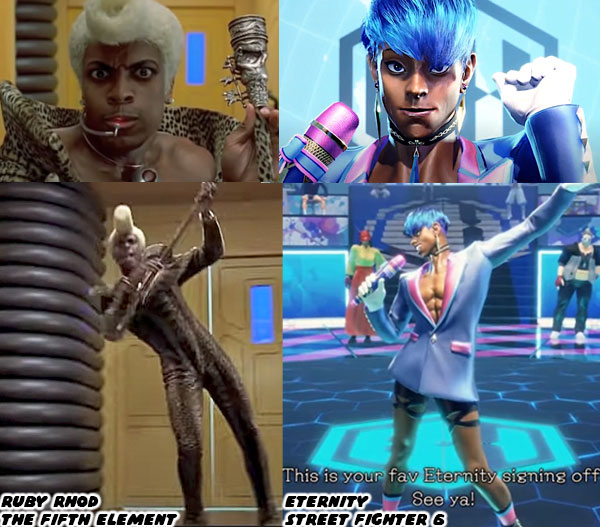
Instead of following one of the classic, or newer SF characters it was the player that would become the focus of the game. Audiences had to create their own avatar. This would be who they used to navigate the Battle Hub, and carry them through the story in the World Tour. The character editor was fairly robust. You could set height, weight, skin tone, texture, facial features, hair types, scars, body markings, tattoos, etc. There were many examples of silly, weird, or
outright strange characters that people had used in game. I had decided early on that I would do my best to put
King Cobra into the game. I felt that the character had been robbed of his opportunity to appear in Street Fighter IV circa 2010.
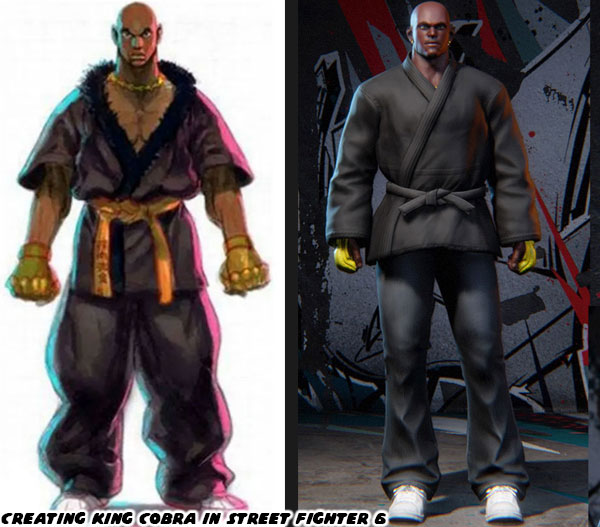
The good thing was that the avatars were not set in stone. You were allowed to edit their look, change their costume, and even rename them at any point through the story. For example the game began with Luke as your mentor. Your basic, and special attacks were mirrored from him. As you progressed through the story you made new masters, and learned their techniques as well. You were free to mix, and match the different moves that you learned through the game. Based on the early design notes from Capcom I figured that King Cobra would have a mix of the moves of Luke, Jamie, and Ken. Later in the game I reached Zangief, and earned his grappling moves. At that point I wanted to switch out King Cobra for my favorite Indian grappler Darun Mister. He had appeared in the Street Fighter EX, and Fighting EX Layer games. So I gave him moves from Zangief, and Marisa as well. If ARIKA, and Capcom had no plans to create a Street Fighter EX 4, then at the very least I could put my own modern version of Darun in SF6.
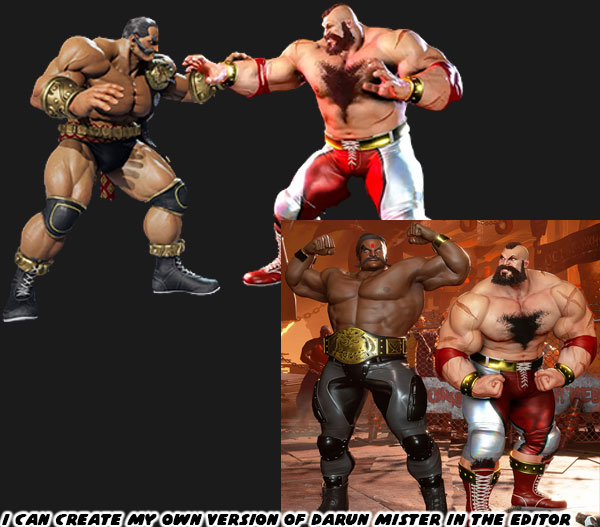
Completing missions, earning new masters, and doing part time jobs were the key to leveling up your character. This gave you more energy, stronger attacks, and of course taught you how to use the main SF cast. As I had mentioned in the previous blogs the game was an introduction to the genre. It taught you how to play, and specifically how to use classic characters as well. You tracked your progress on a smart device the character carried. It allowed you to select your gear, view a map, take pictures, check the status on missions, and even order food to replenish your energy. If you played a certain way you could earn points to level up specific Skills. These were also managed in the smart device. For example if you were a grappling player then you could spend points to increase your health, make your throws stronger, and recover your drive meter faster. This would help you get through particularly tough encounters, or level the playing field when fighting boss characters. You could also read up on the history of the various masters in the series on your device. They would even message you from time-to-time. People that had never played SF could find out what made Ryu tick, why Cammy was obsessed with cats, and even why Blanka was green.
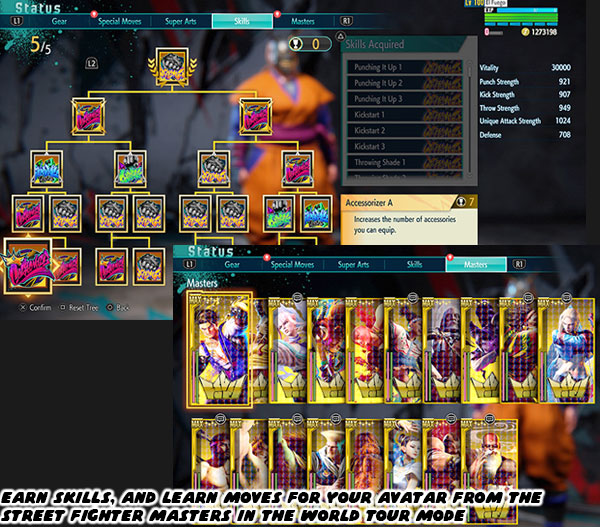
Of course the Street Fighter universe would not be complete without some sort of rival. They might be friendly like Ken, and Ryu, or bitter like Chun-Li, and Juri. In either case it was
the symmetry between the cast that had made the series work so well. Capcom introduced us to a young fighter named Bosch. He appeared in Luke’s gym, and made his presence known by starting a fight with you during your training. The locations, and stages where you met, and practiced with each master greatly reflected their personality. In the case of Luke he was training his PMC recruits in hand-to-hand combat. His company Buckler had a warehouse on the edge of Metro City. It was inferred that this might have been the same gym featured in the intro cinema of Final Fight. It was where Cody, and Guy were training when Haggar told them that his daughter had been kidnapped.
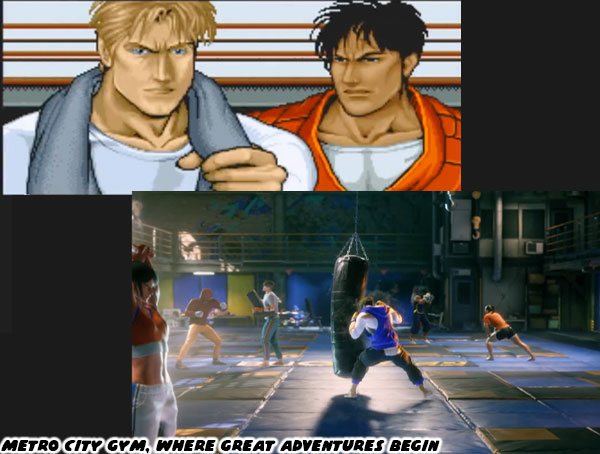
The building was filled with gym equipment, weights, punching bags, and sparring mats. These details reflected Luke’s design, costume, and personality. He was very casual. He focused mainly on training when he wasn’t playing video games. He was not as serious as Ryu when he fought. He approached every encounter casually. That was why he was barefoot, and dressed in loose fitting attire. Everything down to the stripes on his shirt reflected his brand. By comparison Ryu was wearing a kasaya or Buddhist robe, he was mindful, and quiet while meditating under a massive sakura tree in Japan. Guile was wearing a flight suit, and working on the deck of the Byron Taylor aircraft carrier. You could tell that he was serious about his role, and his mission. There was definitely thought, and purpose applied by the SF art team when they were framing the masters.
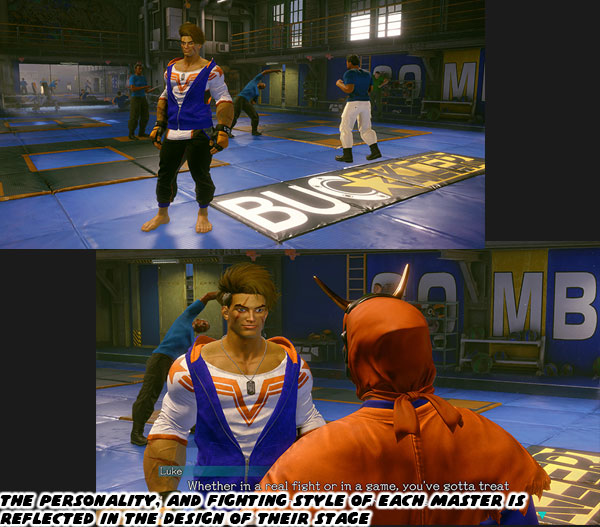
Bosch seemed like a fighter out of place. At first I didn’t know what to make of Bosch’s design, but it steadily grew on me. I had no idea where he came from, what his style of fighting was, or his motivation. All of these things would be revealed little by little during the course of the game. We would discover that he came from a place called Nayshall. We didn’t know it then but he was a member of the resistance. A group of people that were trying to liberate Nayshall from a bunch of NGOs that had moved into the country. These people, and their corporate ties asserted influence over the royal family. Luke insisted that you, and Bosch hit the streets, and create your own paths. It would help make you a better fighter. Bosch was determined to be the strongest.
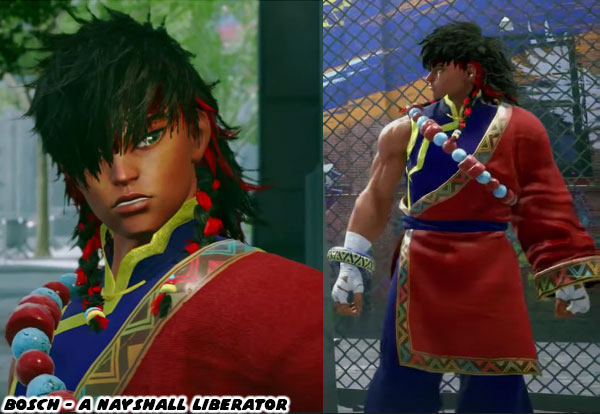
The same care that the Capcom art team put into the stage designs for each SF character was expanded 1000 times when they created Metro City. The reveal of downtown could not prepare me for the amount of work that went into the rest of the world. Beat Square was essentially the Capcom equivalent of Times Square in New York City. These included electronic billboards, posters calling out classic characters, and ads plastered on the sides of shops. There were vendors, street performers, a store to buy, or modify costumes, as well as a place to change the physical appearance of your character. The same level of care that went into NPC pedestrians in other games, such as Spider-Man, and Arkham Asylum, was here as well. People were conversing, sitting down, eating, sightseeing, or just relaxing. Social media influencers were filming themselves, businessmen were rushing from meeting to meeting. It felt like a living, breathing environment.
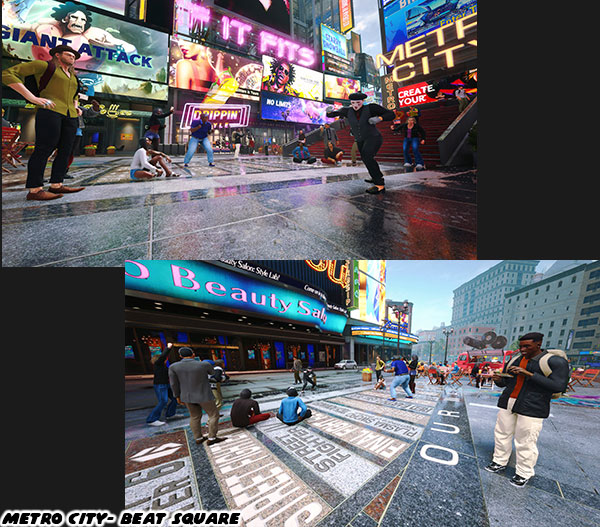
I took a few moments just walking back and forth absorbing the details. That was when I spotted some marble tiles on the ground. Capcom had literally cemented their fighting game legacy in the heart of the city. More than that they listed every title in order of release, minus of course the Turbo, Super, and Ultra versions of the games. Starting with Street Fighter in 1987, and going all the way to Street Fighter 6 in 2023. There were titles that I am sure a lot of people in the US had never even heard of, let alone played. Thanks to Capcom
releasing the Arcade Stadium collection an entirely new generation of fans were discovering worlds they never new existed. Something that surprised me was a game listed, and another that was left off the sidewalk.
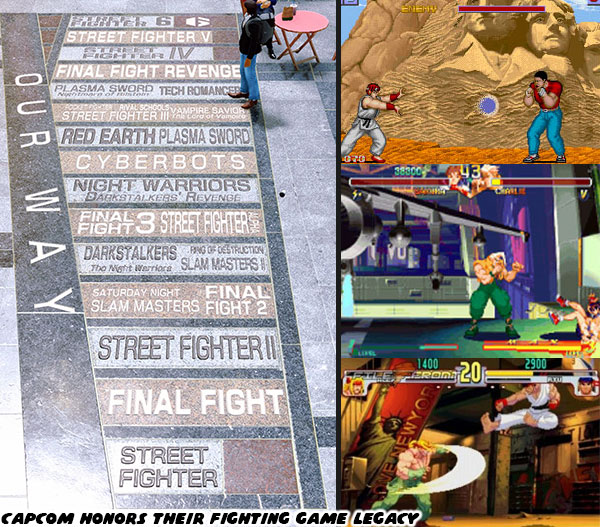
Final Fight Revenge was an arcade game built on the Sega Saturn arcade hardware. This made it easy for the studio to publish copies for the Saturn home console as well. The game was in Japanese arcades in 1999, and there were plans to bring a version out on the Sega Dreamcast in 2000. Sadly the game was poorly received. It was slow, clunky, with 3D graphics that were dated compared to the work of rival studios like Namco. Even though Street Fighter EX had simple polygons as well, it played much better than Final Fight Revenge. Not to mention that EX got a couple of sequels. Unfortunately SFEX was developed by ARIKA, and only published by Capcom. The ARIKA employees were former Capcom staffers that had worked on SF II before leaving to form their own company. Final Fight Revenge was developed by Capcom USA ( which would later be called Capcom Production Studio 8), and published by Capcom. The designs, and art in the game were decidedly Japanese, but the models, and programming were mainly handled by the US team.
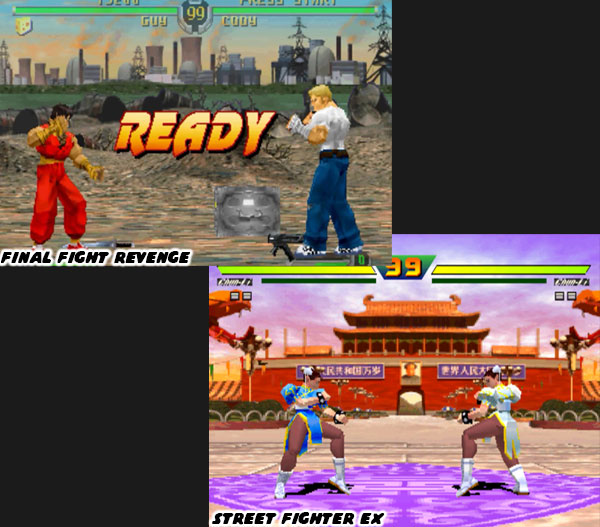
The World Tour could have started in a million different ways, and a million different locations. The choice to start in Metro City was done with tremendous forethought. The development of SF6 would not have been possible if they excluded the Capcom legacy games. Street Fighter 6 Director Takayuki Nakayama, Producers Kazuhiro Tsuchiya, and Shuhei Matsumoto, and Designer Yusuke Hashimoto were familiar with the teams that came before. They were able to connect the dots, and build on the work of industry giants. In the next blog we are going to look at the contributions of the previous SF teams on the evolution of SF6. If you are a long time fan of Street Fighter then I would like to hear your impressions of SF6. If you have never played any game previously then tell me your experiences in the comments section please. As always if you would like to sponsor me
please visit my Patreon page and consider donating each month, even as little as $1 would help make better blogs and even podcasts!






















I could literally only picture Ruby Rhod every second Eternity was on screen.
ReplyDeleteFor my CAC, I just made FF7 Rude. Which ironically ended up looking like King Cobra in a suit and sunglasses.
DeleteDarthEnderX, I'm betting that in less than 10 years somebody will develop a program that allows you to deepfake any character into any movie. I want to see the 5th Element with Guile as Dallas, and Eternity as Rhod.
Delete